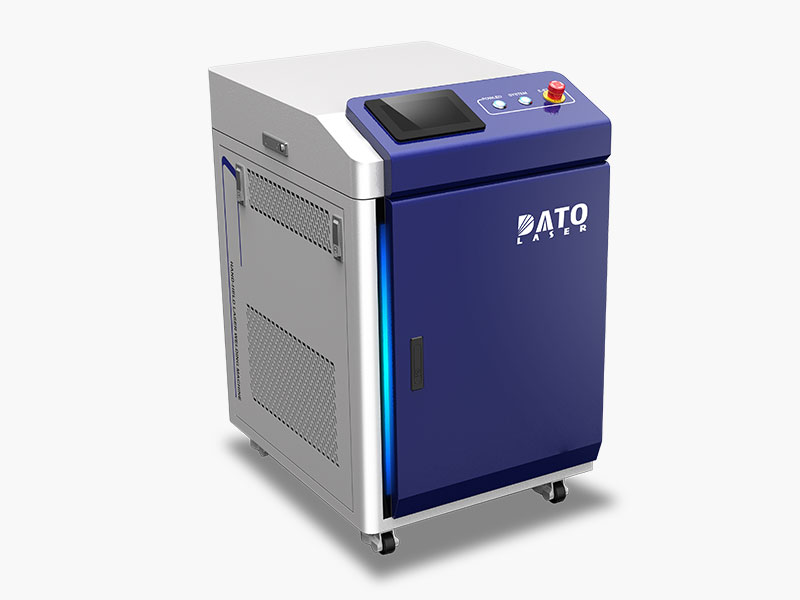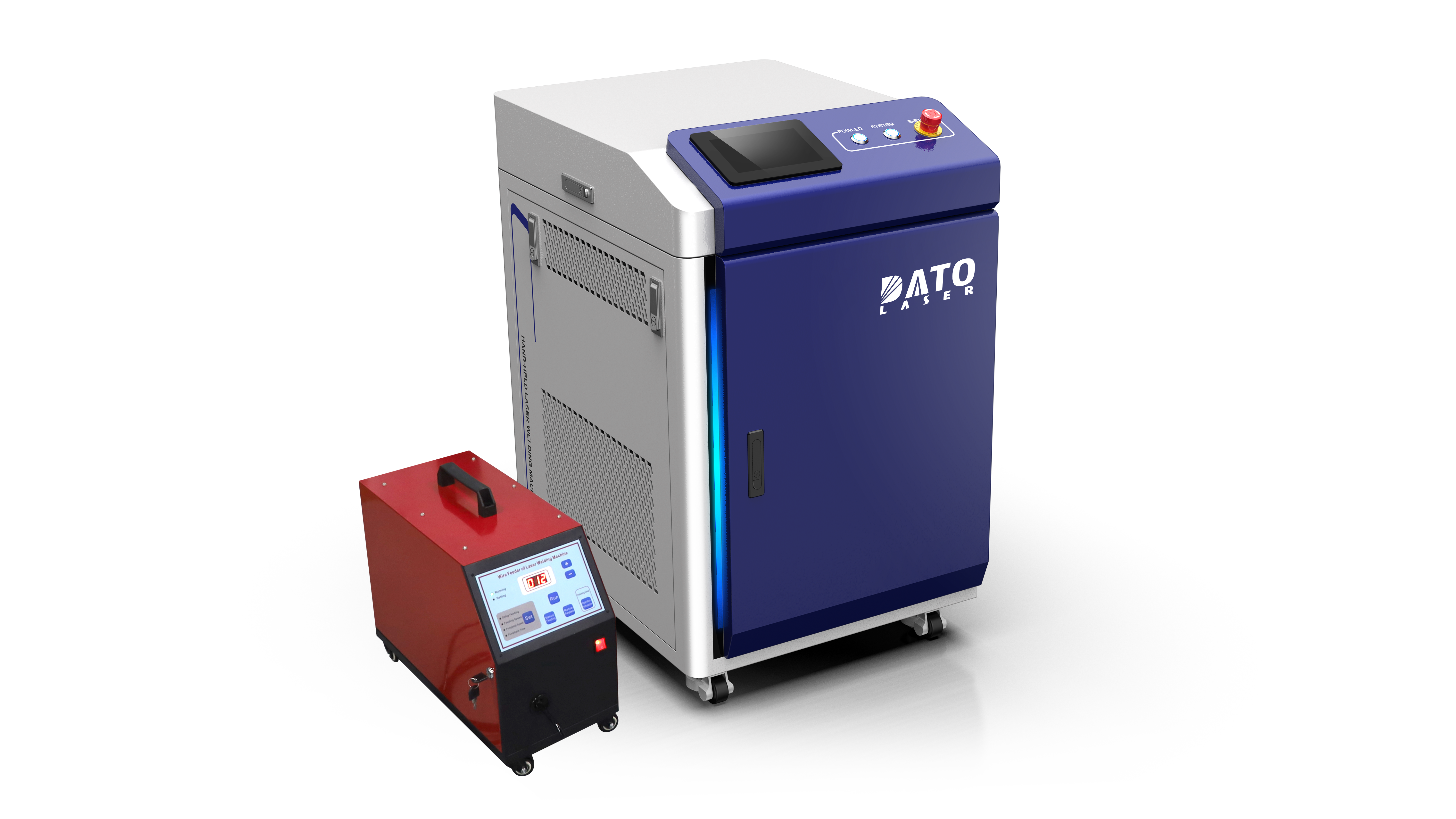The Superior Effectiveness of Laser Cleaning for Rust and Corrosion Removal

In industrial maintenance and surface treatment, the removal of rust and corrosion has long been a critical challenge. Traditional methods such as chemical treatments, abrasive blasting, or manual scraping often come with limitations in efficiency, precision, and environmental impact. Laser cleaning technology, however, has emerged as a groundbreaking solution, offering unmatched effectiveness in rust and corrosion removal. This article explores why laser cleaning machines are revolutionizing the industry, particularly for applications requiring high precision, environmental compliance, and long-term cost savings.
How Laser Cleaning Works to Remove Rust and Corrosion
Laser cleaning operates on the principle of selective photothermal ablation. A high-intensity laser beam is directed onto the contaminated surface, where its energy is absorbed by the rust or corrosion layer but not by the underlying substrate. This absorption causes rapid heating, vaporizing the unwanted material without damaging the base metal. The process is non-contact, non-abrasive, and eliminates the need for harsh chemicals.
For example, when applied to an iron surface, the laser targets iron oxide (rust), breaking its molecular bonds and converting it into gas or fine particles that can be easily removed via an integrated extraction system. This precision ensures that even intricate geometries or delicate surfaces remain intact, making laser cleaning ideal for machinery components, automotive parts, and historical artifacts.

Key Advantages of Laser Cleaning Over Traditional Methods
1. Precision and Versatility
Unlike abrasive blasting, which can erode the substrate, or chemical treatments that risk over-etching, laser cleaning selectively removes contaminants layer by layer. This capability is invaluable for applications such as restoring tooling molds, preparing weld seams, or maintaining aerospace components where micron-level accuracy is critical.
2. Environmental and Operational Safety
Chemical rust removers often contain toxic substances like acids or solvents, posing risks to workers and requiring costly waste disposal. Laser cleaning generates no hazardous byproducts, aligning with global standards such as ISO 14001 for environmental management. Additionally, the process reduces airborne particulates, improving workplace safety.
3. Cost Efficiency and Long-Term Savings
While the initial investment in laser equipment may seem high, its operational costs are significantly lower over time. There are no recurring expenses for abrasives, chemicals, or disposal fees. Moreover, the non-destructive nature of laser cleaning extends the lifespan of treated components, reducing replacement frequency.
4. Adaptability to Complex Surfaces
Laser systems can be integrated with robotic arms or CNC controls, enabling automated cleaning of curved pipes, threaded fasteners, or textured surfaces. This adaptability is particularly beneficial for industries like shipbuilding, where large-scale corrosion on uneven surfaces is common.
Applications of Laser Cleaning in Industrial Settings
1. Automotive and Aerospace Manufacturing
Laser cleaning ensures optimal adhesion for coatings and welds by removing oxides from aluminum alloys or titanium parts. In electric vehicle production, it prepares battery casings and electrical contacts without compromising conductivity.
2. Heritage Conservation
Museums and restoration experts use low-power laser settings to gently remove corrosion from antique metalwork, coins, or sculptures without altering their patina or structural integrity.
3. Infrastructure Maintenance
Bridges, pipelines, and offshore platforms benefit from portable laser systems that strip rust from steel beams or weld joints in hard-to-reach areas, preventing structural degradation.
4. Precision Machinery Maintenance
Laser cleaning restores the functionality of industrial molds, turbine blades, and hydraulic systems by eliminating micro-scale corrosion that traditional methods might miss.
Addressing Common Concerns About Laser Cleaning
1. Is Laser Cleaning Suitable for All Metals?
While highly effective on ferrous metals like steel and iron, laser parameters can be adjusted for non-ferrous materials such as copper or aluminum. Pre-trials ensure compatibility and avoid thermal distortion.
2. What About Thick Rust Layers?
Multi-pass laser cleaning can tackle severe corrosion. Advanced systems modulate power and pulse duration to handle varying thicknesses without substrate damage.
3. How Does It Compare to Ultrasonic Cleaning?
Ultrasonic cleaning relies on cavitation in liquid media, which may leave residues or require drying. Laser cleaning offers a dry, residue-free finish, ideal for immediate coating or assembly.

Why Choose DATO and Leapion Laser Cleaning Solutions?
As pioneers in laser technology since 2007, DATO and Leapion combine cutting-edge R&D with rigorous quality standards. Our laser cleaning machines are engineered to deliver:
High-Efficiency Performance: With power ranges from 100W to 2000W, our systems cater to both fine-detail work and heavy-duty industrial tasks.
Compliance and Reliability: CE, FDA, and ISO9001 certifications guarantee safety and durability.
Global Support: Backed by a team of 120 researchers and 500 professionals, we provide tailored solutions and after-sales service across 80+ countries.
Conclusion
Laser cleaning has redefined rust and corrosion removal by merging precision, sustainability, and cost-effectiveness. For industries seeking to modernize maintenance workflows and reduce environmental footprints, adopting laser technology is not just an upgrade—it’s a strategic advantage. Explore DATO and Leapion’s range of laser cleaning machines to discover how this innovative solution can transform your operations.
Related Blogs
-
 Exploring the Safety, Precision, and Industrial Benefits of Laser Surface CleaningIn today’s fast-paced industrial world, where quality, efficiency, and sustainability are top priorities, manufacturers are constantly seeking better ways to clean metal surfaces without compromising material integrityBlog
Exploring the Safety, Precision, and Industrial Benefits of Laser Surface CleaningIn today’s fast-paced industrial world, where quality, efficiency, and sustainability are top priorities, manufacturers are constantly seeking better ways to clean metal surfaces without compromising material integrityBlog -
 A Complete Guide by DATO and LeapionIn modern industry, surface preparation and maintenance play a crucial role in achieving high-quality manufacturing results. Laser cleaning machines have emerged as one of the most innovative, efficient, and environmentally friendly tools for removing contaminantsBlog
A Complete Guide by DATO and LeapionIn modern industry, surface preparation and maintenance play a crucial role in achieving high-quality manufacturing results. Laser cleaning machines have emerged as one of the most innovative, efficient, and environmentally friendly tools for removing contaminantsBlog -
 Laser cleaning machines are revolutionizing industrial surface cleaning by offering a faster, safer, and more eco-friendly alternative to traditional methods. Whether removing rust, paint, oil, oxide, or other surface contaminants, laser cleaning has become a cutting-edge solution in manufacturing,Blog
Laser cleaning machines are revolutionizing industrial surface cleaning by offering a faster, safer, and more eco-friendly alternative to traditional methods. Whether removing rust, paint, oil, oxide, or other surface contaminants, laser cleaning has become a cutting-edge solution in manufacturing,Blog -
 Introduction: Transforming EV Battery Manufacturing Through Laser TechnologyThe electric vehicle revolution has accelerated dramatically over the past decade, bringing with it unprecedented challenges and opportunities in battery manufacturing. As global automakers commit billions to electrificationBlog
Introduction: Transforming EV Battery Manufacturing Through Laser TechnologyThe electric vehicle revolution has accelerated dramatically over the past decade, bringing with it unprecedented challenges and opportunities in battery manufacturing. As global automakers commit billions to electrificationBlog












